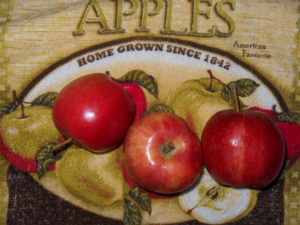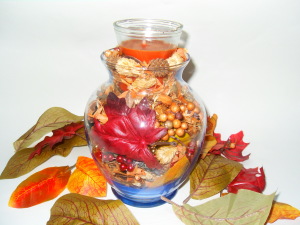
Louisa May Alcott, Author of Little Women
“…I’d rather be a free spirit and paddle my own canoe.”
Louisa May Alcott’s father, Bronson Alcott, was a teacher, Transcendentalist philosopher, craftsman, farmer, lecturer, and dreamer. His idealistic view of life, however, didn’t make him a very good provider for his wife and four daughters, Anna, Louisa May, Betty and Abba May.
Bronson Alcott established a progressive school in Massachusetts which failed partly because he taught a form of sex education and partly because he attempted to teach African-American students alongside white students. He later established an idealist farming community with two of his friends. Bronson named the community the Consociate Family, and the farm, Fruitlands. Louisa, her mother and her sisters also lived there, tilling the land and following a strict vegetarian diet. The communal experiment at Fruitlands failed, too.
Louisa and her family moved many times from New Hampshire to several towns in Massachusetts including Boston and Concord, relying on the financial generosity of friends and family. Louisa learned that it was important to support her mother and sisters because she realized her idealistic father could not.
She loved to write and kept a journal at an early age. Her first piece of writing was a poem.
To The First Robin
Welcome, welcome, little stranger,
Fear no harm, and fear no danger;
We are glad to see you here
For you sing, “Sweet Spring is near.”
Now the white snow melts away;
Now the flowers blossom gay;
Come dear bird and build your nest,
For we love our robin best.
When she turned sixteen, she began to write articles and stories to earn money. During the day, she worked as a governess, teacher, seamstress and housemaid and wrote at night.
The Saturday Evening Gazette published Louisa’s first stories under the pseudonym Flora Fairfield. She published her first book when she was twenty-two in 1854 and earned $22 for a series of short stories she had written for her friend Ellen Emerson, Flower Fables.
Her sister, Anna, and their mother, Abba also went to work while the two younger children went to school. Abba Alcott was one of the first social workers in New England. Their experiences taught Louisa independence and self-reliance. She believed that it was important for women to earn a living.
Up until 1859, she continued to write “foolish stories”, largely for the Saturday Evening Gazette. The publication paid between $15 and $20 for the stories. Her story, “Mark Field’s Mistake,” earned her $30. The Atlantic Monthly published “Love” and “Self-Love” in 1860 and paid her $50. These were large sums of money for the Louisa. She also started writing her first novel, Moods, a project which lasted four years.
Louisa lived in an atmosphere of progressive social, educational and spiritual thinking. Her teachers and mentors were her father, Ralph Waldo Emerson and Henry David Thoreau who lived as well as preached their Transcendentalist beliefs. Although she later became critical of Transcendentalism and the hardship it brought to her family, she was clearly influenced by it.
Transcendentalists embraced the progressive social movements of nineteenth century America including Universal Suffrage for Women and the Abolition of Slavery. Many helped slaves from the South escape through the Underground Railroad.*
Louisa May Alcott’s mother came from a family of Abolitionists who helped slaves escape to freedom and the Alcotts hid slaves during the years before the outbreak of the Civil War.
New England Transcendentalists supported the Abolitionist John Brown, and raised money for his cause. When John Brown was hanged after the raid on Harper’s Ferry, his daughters, Anne and Sarah, enrolled in a school run by the Transcendentalist educator, Frank Sanborn. Louisa and her sisters befriended the girls.
When the Civil War began in 1861, Louisa applied to work as an army nurse. She reported to the Union Hotel Hospital in Washington, D.C. late in 1862. Union Hotel Hospital was a makeshift facility with rudimentary sleeping quarters for the nurses. The hours were long and Louisa contracted typhoid pneumonia. Bronson brought her home when she was strong enough to travel to Concord but she took many weeks to recover.
She never completely regained her health because the cure for typhoid, calomel, contained mercury which poisoned her system. She endured the aftereffects for the rest of her life.
Commonwealth magazine printed the letters Louisa sent home describing her experiences in an army hospital. After she recovered from typhoid, she reworked the letters, changing names and revising events into a book, Hospital Sketches, published by Redpath Publishers. The book was very popular with the reading public.
Louisa earned more and more money from her writing as more and more magazines and newspapers accepted her stories for adults: “The Skeleton in the Closet,” “The Skeleton in the Dark” and “Pauline’s Passion.” Her thrillers, published in Frank Leslie’s Illustrated Weekly and The Flag of our Union, were popular and paid well. Louisa wasn’t proud of them but they helped her support her family. She worked during an era when most women of her class didn’t work outside of the home.
Louisa believed that women should have the same educational opportunities as men and be paid the same as men for the same kind of work. Louisa did not believe that a woman’s only role in life was to be a wife and mother. “As if it (marriage) was the only end and aim of a woman’s life,” she once said. (pp.76, Warrick) Her working mother and the progressive beliefs of her parents and their friends were her greatest influences.
In 1867, Louisa became the editor of Merry’s Museum, an Illustrated Magazine for Boys and Girls which introduced her to the world of children’s literature.
Thomas Niles of Roberts Brothers, Publishers, asked her to write a story for girls. In May, 1868, she began to write Little Women, basing the story on her sisters and their experiences. It was so popular that she immediately wrote a sequel. She resisted her fans requests to have Jo marry Laurie but finally relented and created the character of Mr. Bhaer as Jo’s future spouse. The two volumes were eventually merged into the version the reading public has come to know.
Little Women made its author famous, sought after for interviews and autographs. The fan mail she received was sometimes so overwhelming that her sisters helped her answer it.
Success brought her and her family financial security but it also made her a celebrity. Louisa hated being famous. Fans stopped by her home to say hello and meet her. To avoid the attention, she often posed as the family servant. Louisa loved to write and often left home for another refuge where she could write in solitude.
In 1869, Roberts Brothers gave her a royalty check for $8500. She paid off every debt her family owed and provided every comfort for her family including art courses for May. “My dream was beginning to come true,” (Pp.85. Warrick) she said.
Louisa and her family also supported women’s rights, especially the right to vote.
She actively spoke on behalf of universal suffrage. On March 29, 881, The Concord School held its committee elections. Twenty women, including Louisa, cast their first votes. She continued her volunteer work, too.
Success also brought heart ache. Her sister, Betty, died, followed by Anna’s husband, John Pratt, then May who died giving birth, Abba,her mother, and finally, Bronson. May left her newborn daughter, Louisa May Nericker, or Lulu, in Louisa’s care.
Louisa continued to write and published An Old-Fashioned Girl on April, 1, 1870. In 1871, she wrote and published Little Men and The Christian Union published Work based on her experiences as a working woman. Aunt Jo’s Scrap Bag, another collection of stories, came out in 1872, followed by Shawl Straps for “The Independent.
She published Lulu’s Library, based on the antics of her niece. Her last novel, Jo’s Boys, was published in 1886. Already ill, she slipped into a coma and died two days after Bronson on March 6, 1888.
* The Underground Railroad was a loosely organized system run by black and white volunteers who helped fugitive slaves reach the North. Thousands of men and women followed the Underground Railroad between 1840 and 1860.
To read more about Louisa May Alcott:
Aller, Susan Bivin. Beyond Little Women: A Story about Louisa May Alcott. Minneapolis: Carolrhoda Books, 2004.
Anderson, William. The World of Louisa May Alcott. NY: Harper Collins, 1992
Ditchfield, Christin. Louisa May Alcott: Author of Little Women. New York: Franklin Watts, 2005.
Shealy, Daniel. Alcott in her own time: A Biographical Chronicle of her Life, Drawn from Recollections, Interviews, and Memoirs by Family, Friends and Associates. Iowa City: University of Iowa Press, 2005.
Warrick, Karen Clemens. Louisa May Alcott, Author of Little Women. Berkley Heights, New Jersey, Enslow Publishers, Inc: 2000.
Another Healthy Apple Salad
The Alcott family named their home in Concord Orchard House because of the apple orchard that stood behind it. Apples were a favorite fruit of Louisa May Alcott and her family. When Bronson Alcott opened Fruitlands, apples were a staple of the residents’ vegetarian diet.
2 cups Romaine (or greens of choice)
1 – 2 unpeeled red apples, diced
1/2 cup diced celery
1/4 cup craisins (or raisins)
1/4 cup chopped walnuts (or slivered almonds)
For dressing:
1/2 cup light mayonnaise
2 Tablespoons pineapple juice
1 Tablespoon sugar
In a large salad bowl, toss lettuce, apples, celery, craisins and walnuts. In a small bowl, mix the ingredients for the dressing. (Or use a salad dressing of your choice.) Pour over the salad and toss.
Take to a picnic or serve with grilled food.
Serve immediately.
Like this:
Like Loading...






